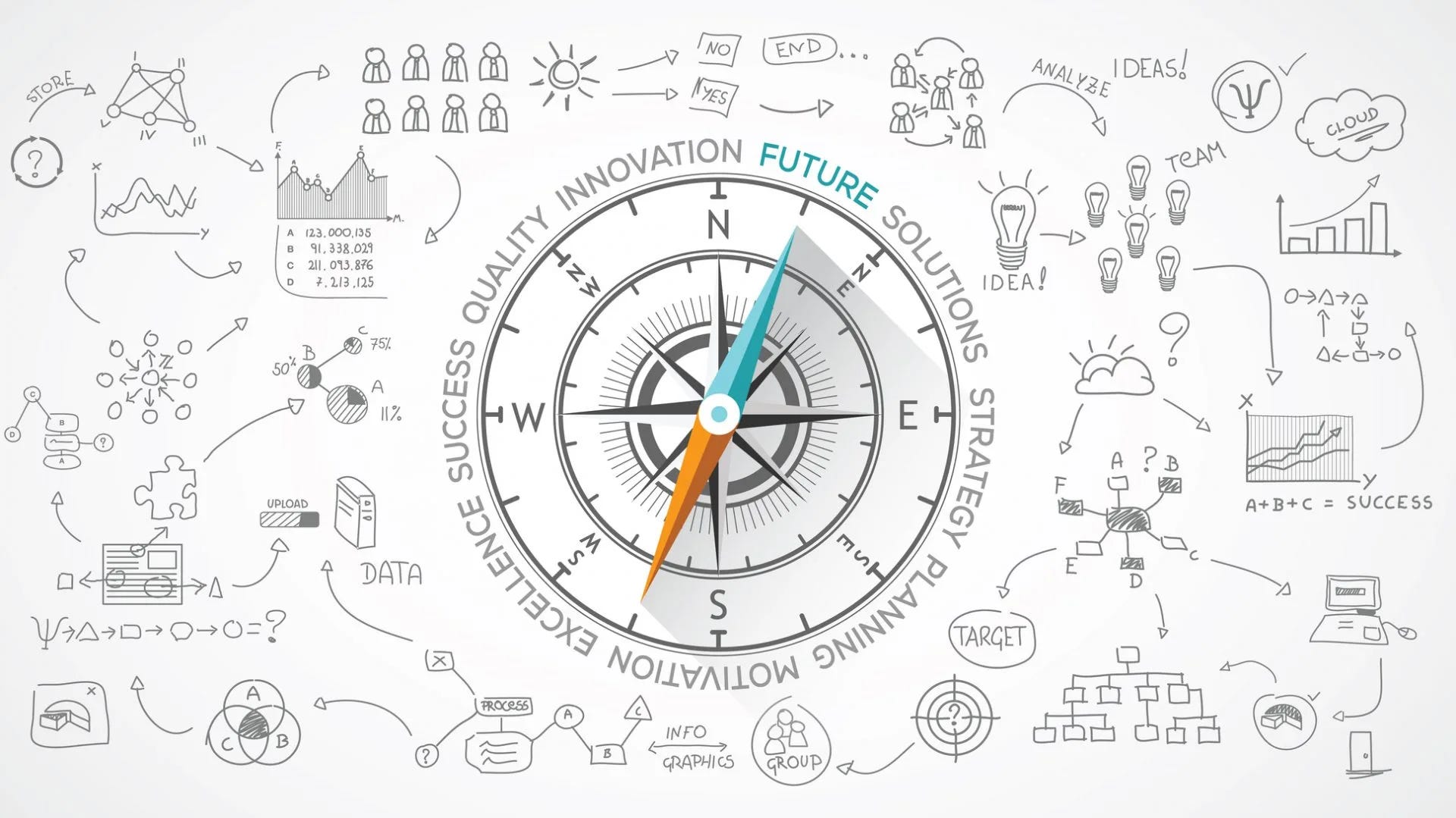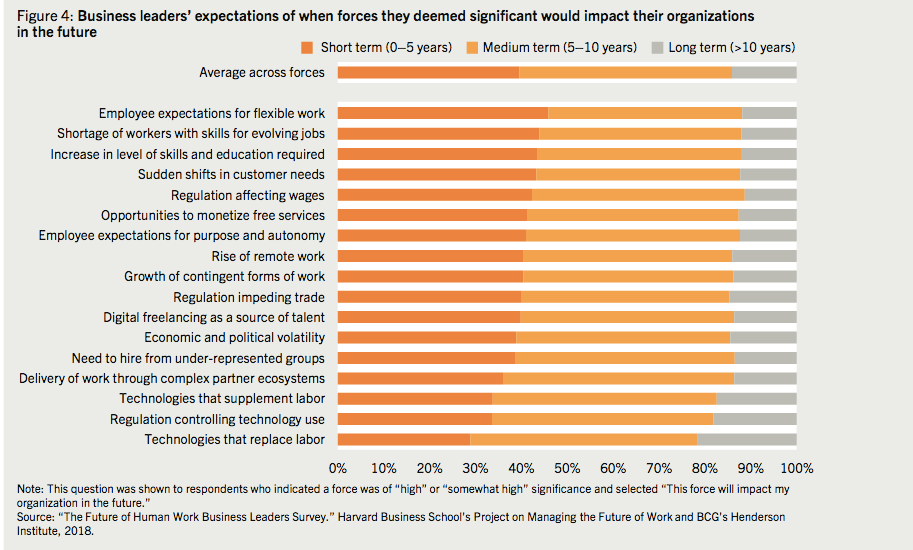As
my eldest child graduates from college with a business degree, he is entering into a brave new world. One that is filled not only with the hope of a bright future but also a tidal wave of uncertainty. When it comes to this new all-digital workplace, the standard practices and expectations of the past must be rethought and retooled. No longer can company executives and hiring practices lean on the expectations and understanding of the previous generations. Generation Z’s emerging job-seekers have far different expectations, values, and insights than their predecessors. They are looking to work at companies and organizations that value their opinions, technical upbringing, and wisdom.
Not only is the workforce changing, but the technology they engage with is evolving even faster. Automation, artificial intelligence, virtual reality, the Internet of Things — all of these emerging technologies are advancing on the present-day workforce and are forcing companies to adapt to new ways of engaging in business or face irrelevancy and failure.
The writing is on the wall: Work is changing. To stay ahead of the revolutionary changes in work, large-scale, future-focused enterprises such as Amazon are investing hundreds of millions of dollars to help train individuals in adapting to digital marketplaces.
According to the Harvard Business School, “businesses face uncertainty due to workforce changes and other forces that are quickly changing how work is accomplished in the digital world. “
In fact, by 2030, it is believed that the 3.5 billion individuals who make up global labor will be working directly with AI and automated technology to accomplish their tasks.
Algorithmic-based workplaces will change everything about how humans engage in work and their expectations from their leaders.

To be a genuinely future-focused leader, you must be willing to adopt a mindset that not only accepts the inevitable changes of the future but is prepared to take the steps necessary to prepare your teams for the adoption and implementation of these world-changing forces.
To help you prepare yourself and your workforce for the future, here are some tips for preparing for the tidal wave of a job change that is coming — and in some cases, already here.
Introduce Gamification Into Your Processes & Expectations
The realm of business is evolving at an exponential rate. Suppose you will stay ahead of your competition and recruit the most effective and influential team members. In that case, you must begin to adapt your processes and adapt to the next generation’s expectations for development and integration.
One way to cement your business’s lead in the new market is through the adoption of gamification. The gamification process is borrowed from the world of video games that my son’s generation and millennials have grown up with. Therefore, it is a realm that the future workforce will have cut their teeth on before applying for your company.
“Millennials have been in the workforce for almost two decades, but businesses are just beginning to realize the need to adapt their approach to working with this generation,” according to Lisa Dodman.
In gamification, you incentivize learning and adoption of processes, skills, and success by building systems of learning that reward employee with creative rewards such as badges, experience, and other incentives. This helps you not only engage your team but will also aid in retaining employees.
Not only does it increase the speed of skill-based learning and performance, but the workforce of the future has been trained to expect gamified incentives and reward through their experience with video games and other engagement systems. The benefits you can gain from gamifying your digital landscape will help you attract the best employees and see the most significant ROI among your technology adoptions and idea development teams.
Adopt The Future Workforce’s Work-From-Home Expectation
Far before the 2020, coronavirus pandemic forced companies to send their employees to home offices, work-from-home flexibility was beginning to become not only a mindset but an expectation for many current and emerging employees.
In a study from the Boston Consulting Group, of nearly 6,500 company executives surveyed, 40 percent reported that they expected that the WFH workforce would take up an exponentially more considerable share of their teams within five years. This means that companies that work toward remote working environments and digital communication adoption will enjoy the benefits of a more flexible and global workforce.
Additionally, Harvard Business School’s project on managing the future of work also articulates this trend as pictured in the graph below.

Want to stay ahead of the curve? It’s not too late to begin adapting your workforce expectations for employees of the future. As a leader, you must start to plan and implement a work-from-home policy and the tools necessary to help them thrive and succeed in a remote environment.
Develop A Team That Adapts With AI & Automation
With the exponential growth of automation and artificial intelligence in the workplace, the World Economic Forum has put forth two fascinating statistics that should both shock and give hope to business owners as they look toward the future:
- Automation and artificial intelligence software will displace nearly 75 million jobs across almost every industry.
- The growth of technological solutions and the need for human oversight and development will create an additional 133 million new positions.
These statistics show the evolution of work. Not only will businesses be forced to change and adapt how they conduct business in the future, but individuals and teams will also need to get creative in their understanding, expertise, and implementation of these new technologies.
And, I believe Generation Z has a major advantage when it comes to AI and Automation. It is a core component of their current classwork which provides them the platform for future learning.
One of the best techniques you can learn quickly as a company CEO or future leader is to teach your teams to see automation and AI not only as a tool. Instead, as a literal coworker with incredible skills and strengths with weaknesses that only their human counterparts can overcome. Help train them to learn the benefits of AI not as a threat but as a way to maximize their performance and in turn the organizations.
By building the ability to adapt and implement in your workforce as both a skill and a value, you can ensure that your teams are ready to embrace the future with success-oriented anticipation rather than fear.
Future Leaders Are Future Planners
Through the implementation of steps and strategies to help your company and the team prepare for the workplace’s future, you will help ensure that you have a place in the market for decades to come. However, this challenge will require that you invest in education and implementation of new solutions and processes that can be complicated and, at times, fear-inducing.
However, history has shown that the business leaders who are willing to put in the time and effort necessary to engage with the future in a risk-tolerant fashion are the ones who emerge from disruptions stronger.
Ensure that your company has a competitive edge in the emerging market by embracing new systems with passion and intentionality. Your employees — and those who are yet to join your team — will thank you.
John R. Miles is an entrepreneur, multi-industry CEO, and Fortune 40 CIO. Through these experiences, he has become a leading authority on passion-struck leadership, digital and data transformations, customer experience, innovative thinking, entrepreneurship, and the future of work.



